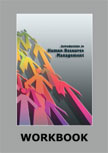Innovations at Wipro
|
|
ICMR HOME | Case Studies Collection
Case Details:
Case Code : HROB040
Case Length : 11 Pages
Period : 1980 - 2003
Pub Date : 2004
Teaching Note : Available
Organization : Wipro Technologies
Industry : Information Technology and Related Services
Countries : India
To download Innovations at Wipro case study
(Case Code: HROB040) click on the button below, and select the case from the list of available cases:

Price:
For delivery in electronic format: Rs. 300;
For delivery through courier (within India): Rs. 300 + Rs. 25 for Shipping & Handling Charges
» Human Resource and Organization Behavior Case Studies
» HRM Short Case Studies
» View Detailed Pricing Info
» How To Order This Case
» Business Case Studies
» Area Specific Case Studies
» Industry Wise Case Studies
» Company Wise Case Studies

Please note:
This case study was compiled from published sources, and is intended to be used as a basis for class discussion. It is not intended to illustrate either effective or ineffective handling of a management situation. Nor is it a primary information source.
Chat with us

Please leave your feedback

|
|




<< Previous
Excerpts
The Process of Innovation
|
Innovation was defined at Wipro as "the implementation of a new idea resulting
into a marketable product or service." According to Wipro sources, an idea would
be considered as a good innovation only when the company could get benefits out
of it.
So, in Wipro, commercial viability of an idea was also given importance along
with innovation.
Wipro's goal was to create components with Intellectual
Properties that would generate revenues over a period of time rather than a
one-time revenue from projects.
|

|
Innovation initiatives at Wipro were based on an in- depth study of methods
for fostering innovation, in companies like Nike , 3M , and Home Depot that
were known for their innovative practices.
The top management developed a framework for innovation and tried to foster
innovation within it.
The framework provided guidelines right from the idea
generation stage to commercialization of that idea. The innovation process
at Wipro was represented through the Innovation Clock (Refer Figure I).
The Innovation Clock consisted of 12 steps. The initial step was the
creation of an innovation framework followed by identifying the themes to be
worked on.
Another step involved generating ideas from employees followed by
a customer validation process for the ideas.
Along with starting the
innovation process, the top management at Wipro also realized the role
played by rewards and recognition in motivating employees to come up with
innovative ideas and framed a detailed rewards policy.
The rewards and recognition were given to employees based on their
competence and response from the market. The idea generator and the team as
a whole, which was accountable for the success of a project, were rewarded
and the name, picture and the idea in brief were listed on the company's
intranet...
|
|
Future Prospects
According to Wipro sources, the innovation process enabled the
company to come up with a strong product portfolio that assured the
company of good revenue streams. Analysts felt that with its focus
on innovation, Wipro would be able to achieve its goal of being one
of the top 10 IT players in the world. They were also of the view
that as the company was focusing on consultancy services, its
innovative software solutions might enhance its image in the global
software industry... |
Exhibits
Exhibit I: Wipro Promise Statement
Exhibit II: Profit & Loss Statements of Wipro
Exhibit III: Innovative Themes at WT
|
|










